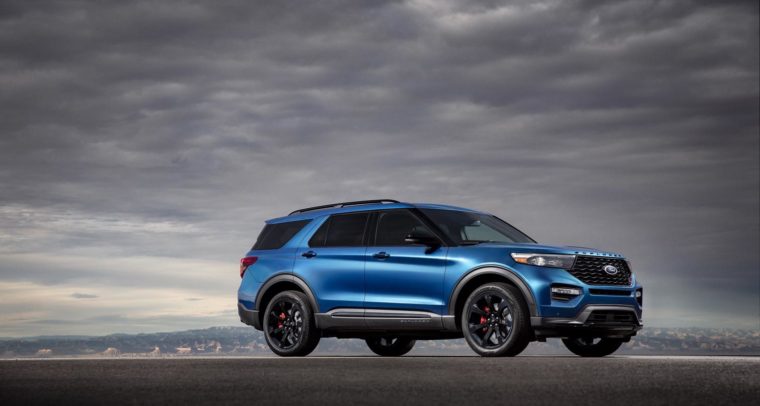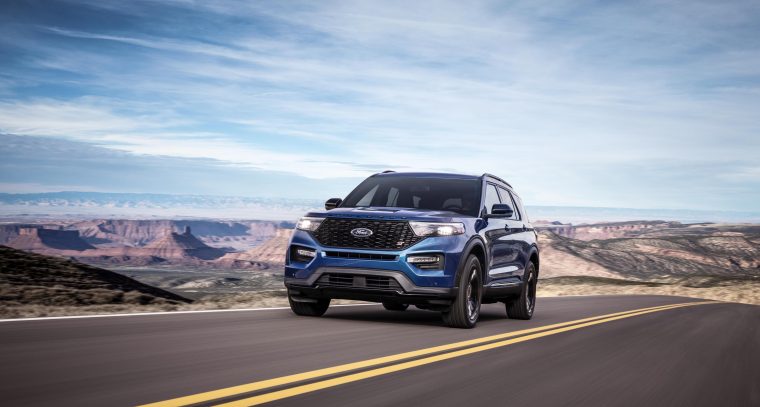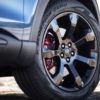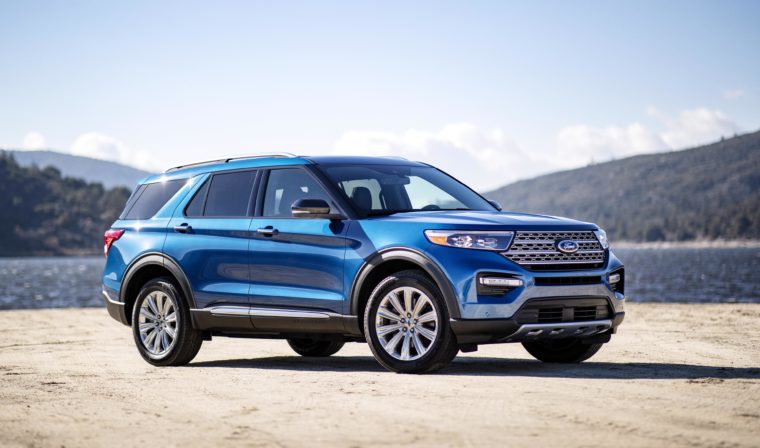The all-new 2020 Ford Explorer made quite the lasting impression when it debuted in early January at Ford Field and upon its wider premiere at 2019 NAIAS. It’s handsome, spacious, lighter, and smarter, and it promises to be the next big go-to for individuals and families with a taste for excitement and adventure. Perhaps best reflecting the next-level capabilities of the next-generation Explorer are the most noteworthy additions to the lineup: the Explorer ST and the Explorer Limited Hybrid.
“This new generation of Explorer recognizes that every family — and every driver — is unique,” said Hau Thai-Tang, Ford executive vice president, product development and purchasing. “With an all-new ST and an all-new hybrid, there truly is an Explorer for every adventure.”
More from Ford Performance: 2019 Ford F-150 Raptor gets Trail Control for more off-road dominance
The first-ever 2020 Ford Explorer ST
The 2020 Ford Explorer ST isn’t just the most powerful Explorer to date, but it’s also the most powerful Ford SUV ever built. The Explorer ST gets a 3.0-liter EcoBoost V6 that puts out 400 horsepower and 415 lb-ft of torque, which Ford anticipates will help it achieve a top speed of 143 mph.
Aesthetically, the Explorer ST differentiates from its brethren with its black mesh grille insert, lower bodyside details, ST badging on the grille and tailgate, EXPLORER badging on the front edge of the hood and rear liftgate, and roof rack side rails. Inside, it gets leather sport bucket seating with micro-perforation, City Silver accent stitching, and an ST logo embroidered in the headrests. Other interior features include a heated flat-bottom sport steering wheel with ST logo, distinctive floor mats, Ford Performance-branded door sills, and a 12.3-inch all-digital instrument cluster.
“We designed it to be an ST from the beginning,” said Ed Krenz, Ford Performance chief functional engineer. “There’s no mistaking its ST DNA. It has a performance feel with sustained performance capability and wears an unmistakably ST appearance. More than anything, it’s just a hell of a lot of fun to drive.”
A Class III Trailer Tow Package with Cargo Management System will come standard, as will all-new Active Park Assist 2.0. The Ford Explorer ST is available with an ST Street Pack and an ST Track Pack, both of which will add 21-inch aluminum wheels and update performance brakes.












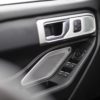

The first-ever Ford Explorer Limited Hybrid
The Explorer’s legacy as a family-friendly vehicle is part of what Ford taps into with the all-new Explorer Hybrid, offering great fuel efficiency and range for road trips. Powering the Explorer Limited Hybrid is a 3.3-liter hybrid powertrain that Ford expects to deliver 318 combined horsepower. This powertrain leverages an all-new 10-speed modular hybrid transmission and a specially designed liquid-cooled lithium-ion battery that fits into the chassis for superior second-row passenger space and cargo capabilities.
“Reduced cargo space in hybrids is a thing of the past for Ford customers,” said Bill Gubing, Explorer chief engineer.
Ford has not made a guess as to how many miles the Explorer Limited Hybrid will get to the gallon, but it is expecting an EPA-estimated 500-mile range between trips to the gas station for RWD models.
Because the Explorer Hybrid will be available for the high-end Limited trim, it will feature plenty of high-end amenities like standard Active Noise Cancellation, Ford Co-Pilot360 Assist+, heated second-row seats, 10-way power adjustable front seats, wireless charging, and a 14-speaker B&O premium sound system.
The Ford Explorer ST and Ford Explorer Hybrid will be built at Ford Chicago Assembly Plant and are scheduled to hit the market this summer alongside the Explorer, Explorer XLT, Explorer Limited, and Explorer Platinum.

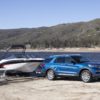


Safety First: See how today’s Ford lineup scores in safety testing
Richard Bazzy is the face of Shults Ford, the No. 1 Ford dealer in Pittsburgh and all of Pennsylvania. Known for his unique approach to selling cars and his penchant for cowboy hats, Richard runs Shults Ford of Harmarville, Shults Ford Lincoln of Wexford, and Shults Ford South. Visit his YouTube channel and see just how well Richard Bazzy can yee a haw.


